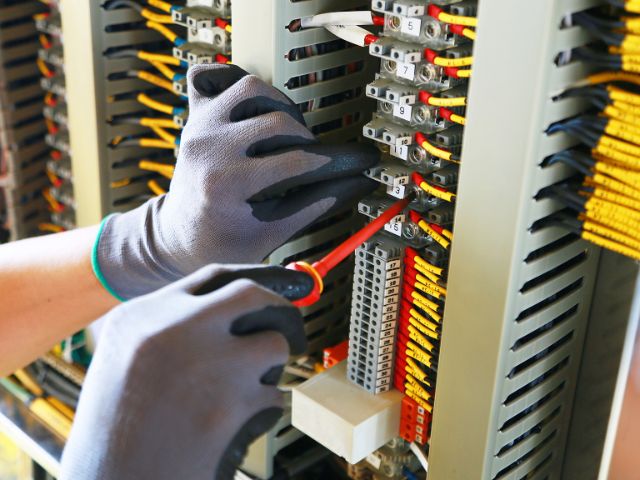
Electric enclosures may not be the most visible components in an industrial setting, but they play a critical role in electrical systems’ safety and smooth operation. For facility managers, electrical engineers, and industrial manufacturers, a comprehensive understanding of electric enclosures isn’t just beneficial—it’s essential.
Keep reading to learn what electric enclosures are and why they’re so important for the safety of the workers and the facility.
Electric enclosures, also known as junction boxes, are essential to any industrial electrical system. Their purpose is to house electrical components and protect workers. They surround equipment and the environment from the inherent hazards of electricity, such as shocks, fires, and explosions. These enclosures come in various shapes, sizes, and materials, each designed to offer a specific level of protection against external influences, including dust, water, and corrosive agents.
Electric enclosures aren’t one-size-fits-all. Instead, they cater to specific needs and can serve many functions. There are custom electric enclosure solutions for indoor and outdoor use, hazardous locations, and extreme weather conditions. Manufacturers create enclosures out of stainless steel, carbon steel, fiberglass, or even polycarbonate, each offering its own advantages and limitations.
These varying enclosures serve as the first line of defense in protecting sensitive electrical equipment. For example, dust-tight enclosures are crucial in environments where particulate matter could cause a short circuit or compromise electrical connections’ integrity. Similarly, gas-tight enclosures are nonnegotiable in areas where flammable gases are a constant risk.
Now you understand what electric enclosures are, but why are they so important? In industrial settings, compliance with safety regulations is paramount. Electric enclosures directly reflect this commitment to safety and must adhere to industry standards.
The enclosures’ international protection (IP) ratings provide a clear and standardized approach to understanding the protection an enclosure offers against the ingress of solid objects and moisture. NEMA ratings offer a similar code for enclosures in North America.
The first step is selecting the right electric enclosure, but ongoing management is equally critical. Regular inspections ensure environmental conditions are within rated limits. Promptly replacing damaged enclosures after them is a vital practice. To ensure a comprehensive approach to electric enclosure management, you must involve all stakeholders, from procurement to maintenance teams.
Electric enclosures are more than just housing for electrical components. They’re a crucial element in the protection and efficient operation of industrial electrical systems. By understanding their significance and employing best practices in their selection and maintenance, facility managers and engineers can ensure that their operations have the highest level of protection and performance.
24World Media does not take any responsibility of the information you see on this page. The content this page contains is from independent third-party content provider. If you have any concerns regarding the content, please free to write us here: contact@24worldmedia.com